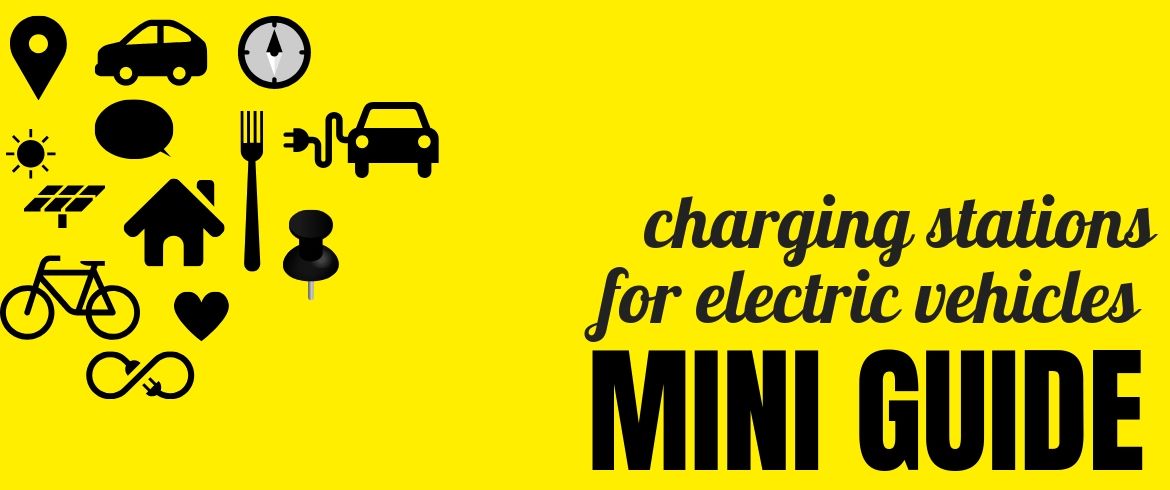We have already explained to you the reasons why you should install charging stations for electric vehicles in your hotel, restaurant of Bed & Breakfast… But how can this be done? What are the steps to follow? Here is complete manual for those who want to invest in electric mobility. A simple guide, in 10 steps, to install charging infrastructure for the EV.
5 reasons to implement a charging infrastructure for electric vehicles

Electromobile guests decide on their holiday destination based on the charging infrastructure that is available. […] many hotels and restaurants already try to attract this growing
target group. In addition to that, classical holiday ideals like for instance silence, nature and relaxation can be applied directly to electric mobility as well. (Bayern innovativ)
The growing number of electric vehicles reflects the importance of electric mobility within the field of tourism. Electric car drivers are attracted if a proper charging infrastructure is available in a destination, accommodation or touristic place. For this reason, f your hotel can offer a e-charge service, you are able to acquire new customers.
But the implementation of charging stations for touristic needs offers numerous further advantages.
- People that are driving electric cars are usually wealthier. As a consequence, they are not only responsible for sales increases due to the services they consume (i.e. payment of charging
processes), but also for the added value they create during their stay due to their awareness for higher quality. - For purchasing a proper charging station, attractive regional and / or national subsidies are usually available. Partially, financial grants can be also used for preparational activities.
- A company or destination is able to create an unique selling proposition by implementing a proper charging infrastructure. Thereby, an increase in their competitiveness can be expected.
- Furthermore, a positive and sustainable image can be created by enforcing actions related to electric mobility. Companies can therefore position themselves as especially innovative.
All-in-One Guide to implement a charging station for electric car in your hotel
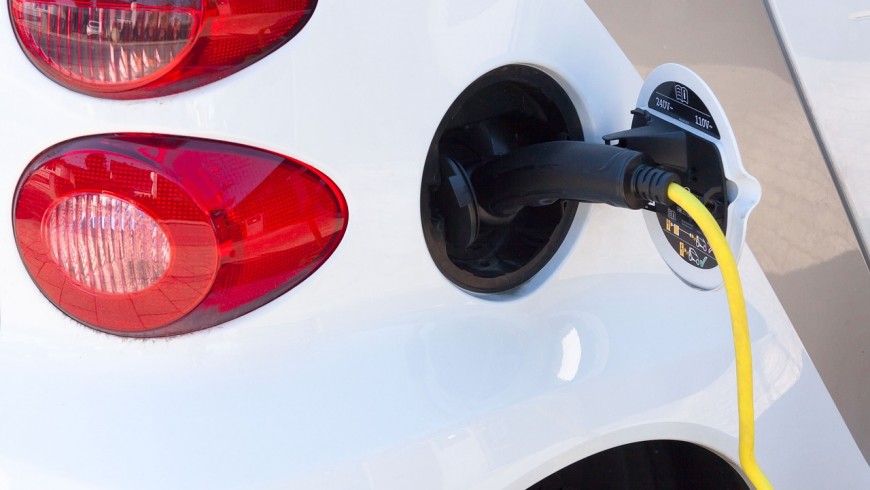
For the implementation of charging stations for electric vehicles there are 10 points to consider, ranging from building permits to invoicing, from possible financing for the electrical system. But let’s proceed step by step and see in detail everything you need.
1. Building permits for charging stations for electric vehicles
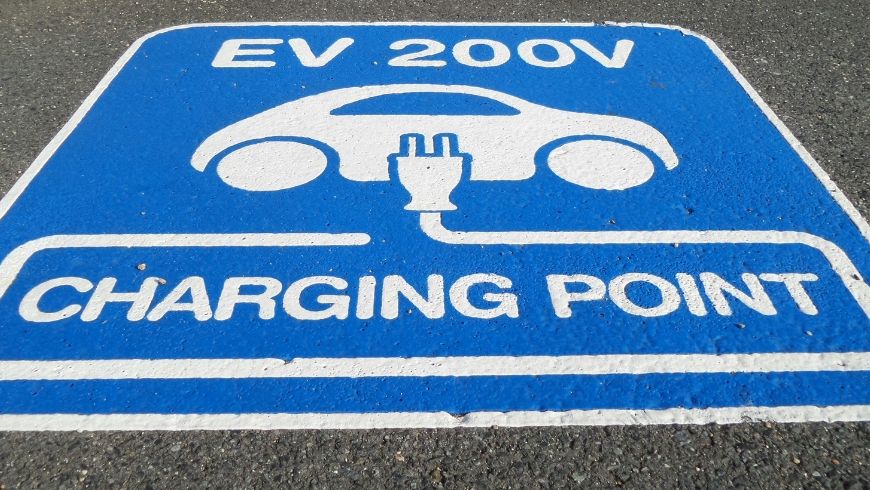
The intention of realising a charging station may has to be permitted by considering building law or has to be reported to the authority responsible. This has to be clarified in advance by taking into account the relevant national conditions. Thus, it is important to consider enough time in advance that may be needed for an official process.
Before starting implementation work, it is important to check whether building permits are required in your region.
2. The electrical system

Before buying a charging station for electric vehicles it is essential to pay attention to:
- Load capacity of the electrical system
- Available load (can be determined by invoices or by contacting the network operator): there must be a sufficient capacity for the charging station. If the load capacity needs to be increased, check the requirements of the grid operator. Usually, from 7.4 kW upwards, a three-phase network connection is required.
- Available space in the electrical cabinet: it may be necessary to insert a separate fuse for the electrical circuit for the charging station.
Furthermore it is essential to take into consideration the peaks of use of the electrical system, considering all the devices used inside the hotel and the energy required for recharging, which will depend on the power of the station.
Consider the charge times
In the place where guests can recharge their cars in a short time (restaurants, spas, supermarkets, etc.), it is necessary to supply more energy, to allow the car to be recharged faster, while in the places where guests have more time to recharge (hotels and b&b, where recharging can take place during the night) requires less energy to recharge the car.
On average, a full charge requires these times:
- at 3.7 kW: 5-6 hours
- at 7.4 kW: 3 hours
- at 11 kW: 2 hours
- at 22 kW: 1 hour
Naturally it is necessary to be followed by a specialized electrician, what we can tell you is that it is necessary to connect the charging station separately starting from the electrical panel, without further services connected to the electric line and that depending on the required charge capacity and the length of the cable (distance between charging station and distribution box) the size of the power line also changes.
3. Technical equipment for charging stations
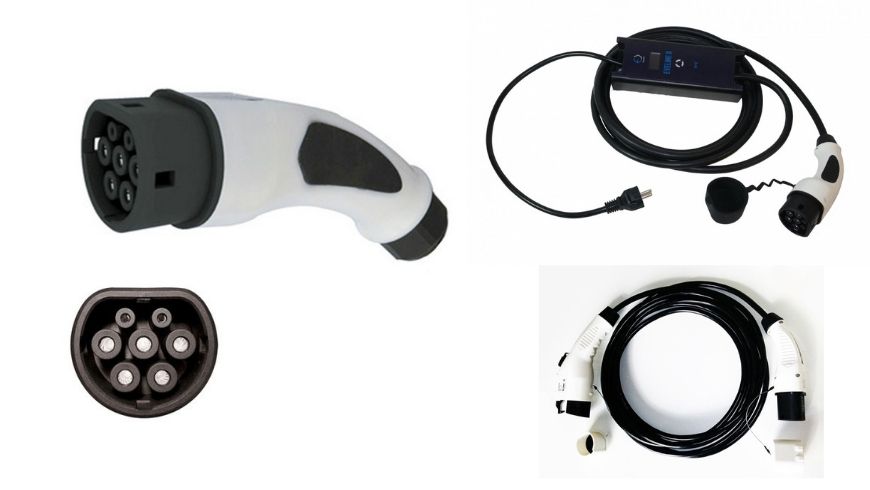
The charging stations should be equipped with the European standard plug (Type 2 IEC62196), in order to be able to recharge as many electric vehicle models as possible. If the vehicle is not equipped with a Type 2 plug, an adapter cable may be used.
We also advise you to choose a charging station equipped with all the necessary protection devices and a recharge counter, so you’ll be able to measure individual energy uses and the related tariffs.
4. Positioning of the charging station
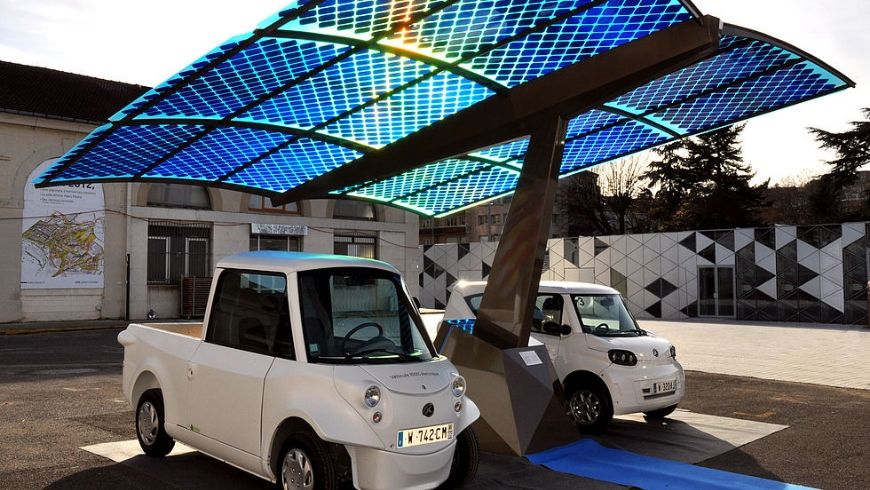
Where to place the charging station? The first things you need to think about are safety, accessibility and comfort of your guests.
In general it is suggested that the length of the electric line (ie the distance from the charging station to the next distribution box) is as short as possible. It is ideal to place the charging station halfway between two parking lots (with sufficient space in front) to allow charging of different types of electric vehicles.
If the charging station is not waterproof, it is necessary to provide adequate weather protection. To provide a more comfortable charging experience, you may also decide to light and protect the charging point. Remember that if you have chosen a smart charging station, your Internet connection will have to reach the charging area.
Don’t think only about today, but consider the possibilities of expansion.
5. Payment system

If you decide to offer a paid service, the electric vehicle charging station will have to have a counting system, so you can calculate every single use. For hotels, farmhouses and B&Bs we recommend entering the cost of charging on the room bill, as a service charge. This makes the guest payment experience easier. Alternatively, the best solution is a payment option by credit/debit card/PayPal that does not require any registration.
In general, the cost of the service can be counted in these ways:
- Free (free service to attract new customers)
- Cost measured based on the electric current used (in KWh)
- Cost measured based on recharge time
- A mix between KWh and time
- One-time parking fee
You are not selling energy, but a recharge service, so you are free to choose the price. It may be reasonable to ask for € 5 more per night for those who intend to park and recharge in the parking space reserved for electric vehicles, but it might be even smarter to offer the service for free, considering that the cost to recharge a car is minimal. By doing so, you will guarantee an ever-increasing number of electric car tourists in the coming years, who will select your hotel because in line with their needs.
6. Load management
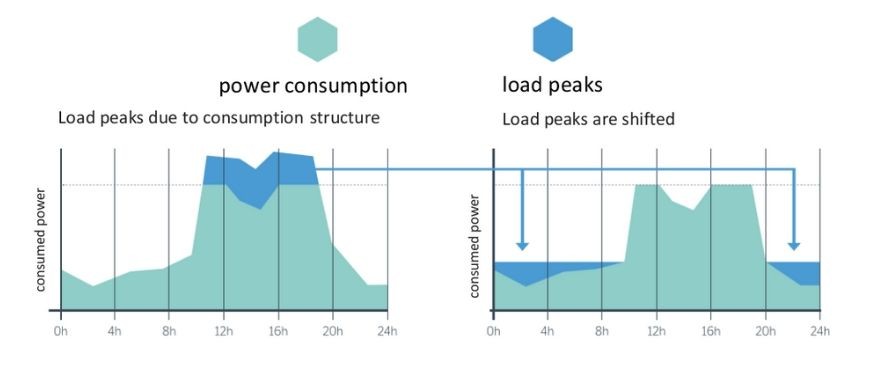
It is better to buy a charging station that has integrated the load management function (especially for accommodation facilities that have different sources of energy consumption).
The load management system analyzes load peaks and starts vehicle recharging processes when other connected users need little energy.
7. Use of electricity from renewable sources
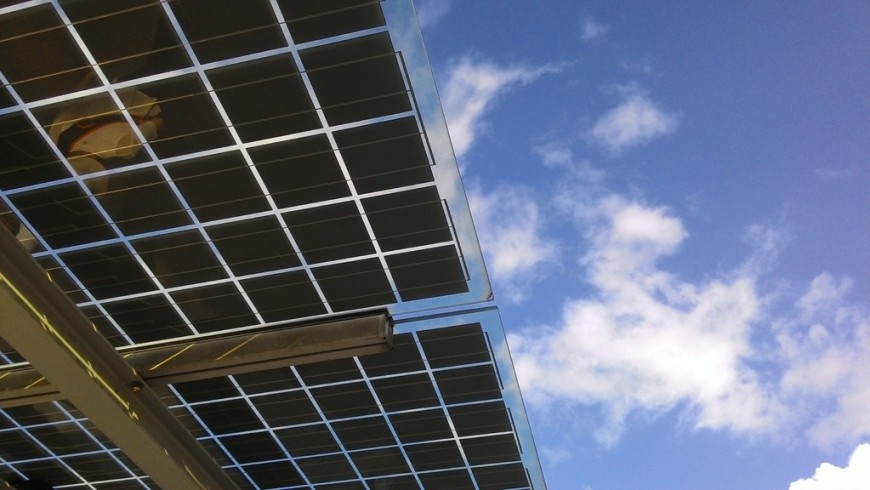
To be truly respectful of the environment, electric vehicles must be recharged with clean energy, that is coming from renewable sources (photovoltaic, wind or hydroelectric). For this the installation of a charging station must be accompanied by the choice of a 100% clean electricity supplier, or by the installation of a clean energy production plant.
8. Investment costs
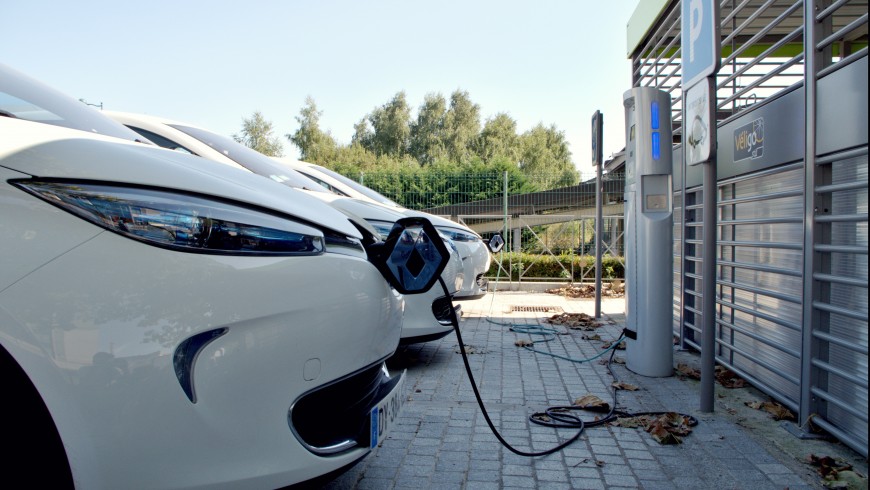
The main costs to consider are:
- costs for connection to the network or for its extension (if necessary) and for increasing the network power;
- preparatory work by the electrician;
- if necessary, excavation and foundation work;
- purchase of the charging station (hardware and software);
- maintenance.
9. Financing opportunities

There are numerous opportunities for contributions and funding, check which ones are available in your region.
10. Communication & Promotion

Adequately communicating the presence of the electric vehicle charging service is essential to attract new customers and to let guests know the details of the service offered. You can use numerous channels: you can report it on your website, in our platform, in the various tourist promotion sites, with press releases and in social media.
Furthermore, it is essential to publish your own recharge point on dedicated maps and web-apps, such as:
- lemnet.org,
- www.plugshare.com,
- https://chargemap.com/map
- https://chargenow.com/web/chargenow-it/map.
- www.goingelectric.de/stromtankstellen
- e-tankstellen-finder.com
- greenmobility.bz.it
This with regard to online presence: we also advise you to highlight the charging station with a sign and communicate to customers the choice of respect for the environment, for example emphasizing that the electricity is 100% renewable.
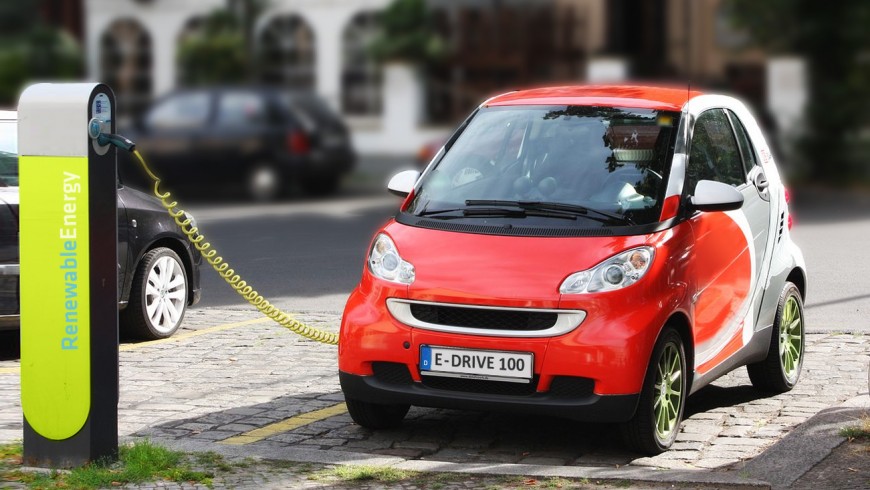
FAQ – Frequently Asked Questions about EV Charging Stations
How much does it cost to install an EV charging station in your hotel?
The 3 main types of costs to consider are:
- Electric-car station acquisition. The cost depends on power level, ability to resist degradation, etc.
- Electric-car Station installation. This cost depends on power level and on the specific location. It can vary enormously depending on the specific national / local administrative hurdles and authorization processes.
- Maintenance and operation. This cost depends on:
- Contract with electricity provider (depending on power level)
- Electricity
- Maintenance and repairs
- Recurring costs for payment means
- Interoperability costs
- Customer enquiries.
Are there government grants for EV charging stations?
Generally speaking, depending on the location and time, public funding schemes may exist to partially cover purchase and installation costs. Maintenance and operation costs are in most cases excluded. A fraction of the costs (marginal in most cases for the time being) may be retrieved through usage fees.
Clicking on this link you can download a presentation with detailed information about Public Funding possibilities to cover e-cars station’s installation costs in Germany, Austria, France, Italy, Slovenia and Switzerland.
What kind of plugs are there for electric cars?
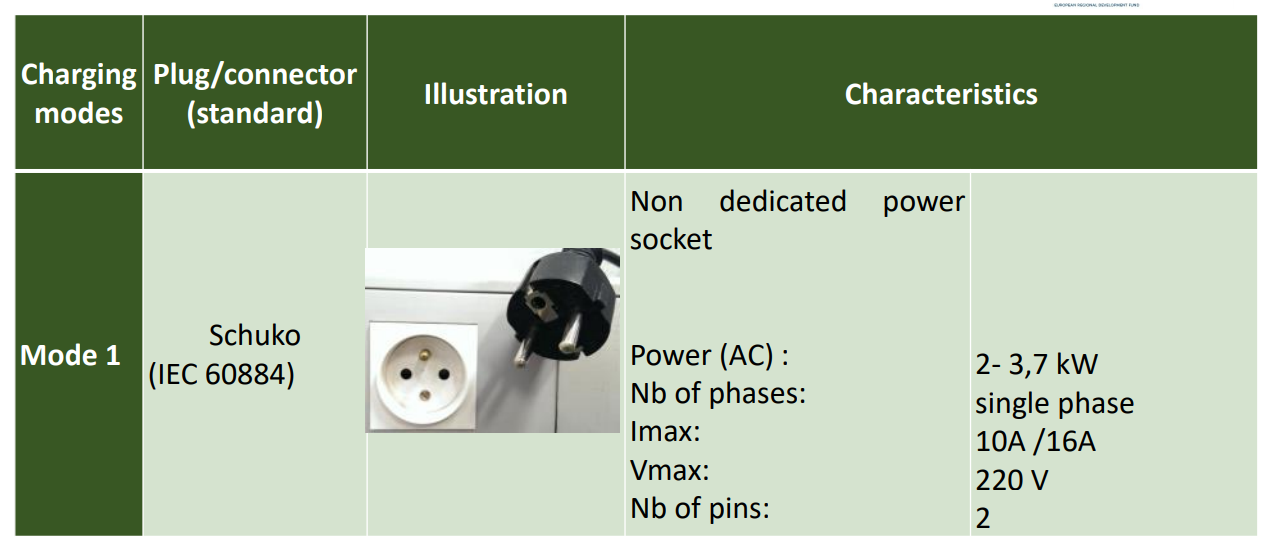
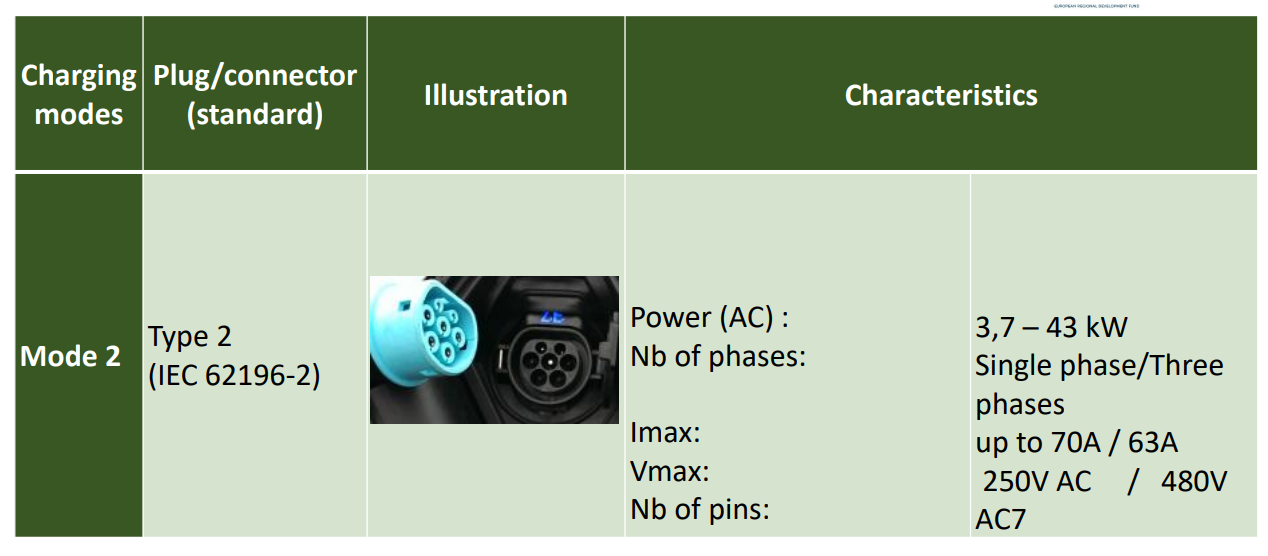
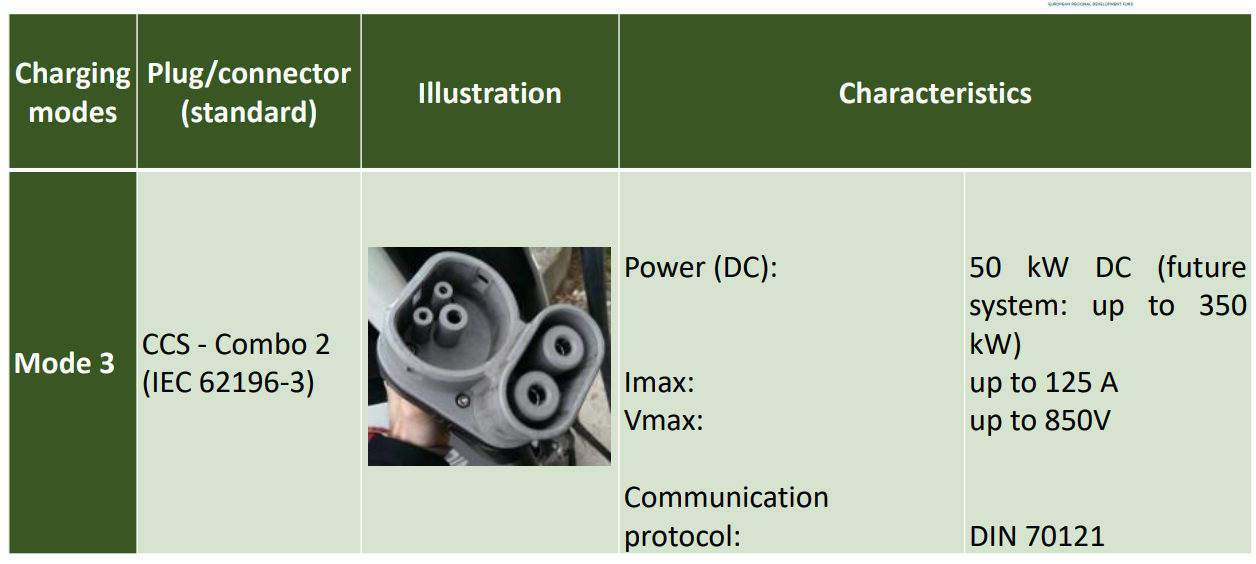
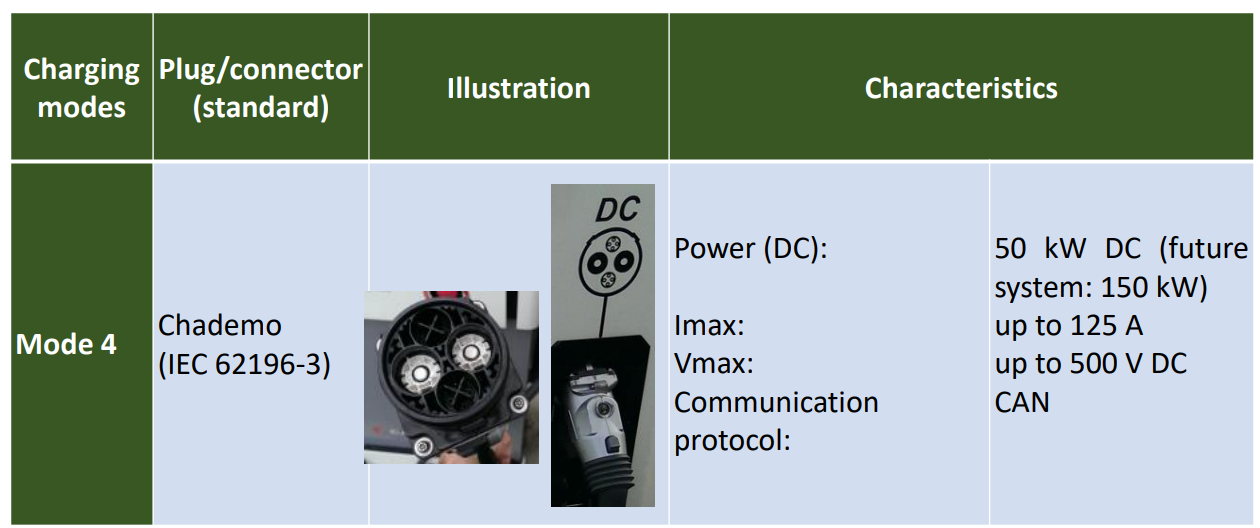
There are 3 European Standarized connectors types and 1 additional type of plug.
The 3 EU-standardized plugs are:
- Schuko (« normal plug »)
- Type 2 (AC)
- CCS-Combo2 (DC)
The additional type is:
- Chademo (for cars from Japan or Korea)
What voltage do electric cars charge at?

- SLOW charging (3-8 hours for 100 km)
• Lower cost
• +/- 1 customer per day
• (very) Low price for customer (0 to 2€ per session) - ACCELERATED charging 22 kVA AC (45-60 min for 100 km)
- FAST charging (20-30 min for 100 km)
• High cost (infrastructure + operation)
• (potentially) many customers per day
• Higher price for customer (+/- 1€ per 5 minutes)
What aspects you need to consider when planning the power of the e-car charging station?
- Rising range of vehicles and increasing charging power to 350kW. → further expansion of public charging infrastructure is clearly set towards high-performance CCS fast charging points
- High-performance charging infrastructure only required at mobility nodes, as for instance highways, where people need to charge their vehicles fast – at hotels and Park & Ride low-performance charging points are sufficient.
- Generally high costs for infrastructure, as respective transformer stations have to be partially rebuilt for required power output.
Where is it better to place a charging station for electric vehicles?
There are 4 main questions to consider in the choose of the localization of an electric-car charge station:
- Can the user find the e-car station easily? → How is it included in mapping, traffic management system
- Is the location convenient?→ Places where the user would park the car anyway, necessary detours
- How is the “micro”- environment?→Easily accessible from the street, enough space to park
- Does the user feel safe? → No dark and/or dangerous places
What questions to consider when you are planning an ev charging station?
The main factors to consider when planning localisation in tourist hot-spots (and many other places):
- type of electric car charging station typology (fast vs. slow)
- electric vehicles traffic
- frequency/needs for charging on micro location
- intentions for stopping on a certain micro location
- whether it is a quick stop: highway, diners, bars
- long stop: big shopping malls, tourism attractions, lodging, restaurants
- Strategic Planning of Location
- Facilitate ease of use
- Ensure cost-effective installation for destination operator
- Localisation in touristic places has to be cooperated with tourism and energy sector to better identify needs and potential
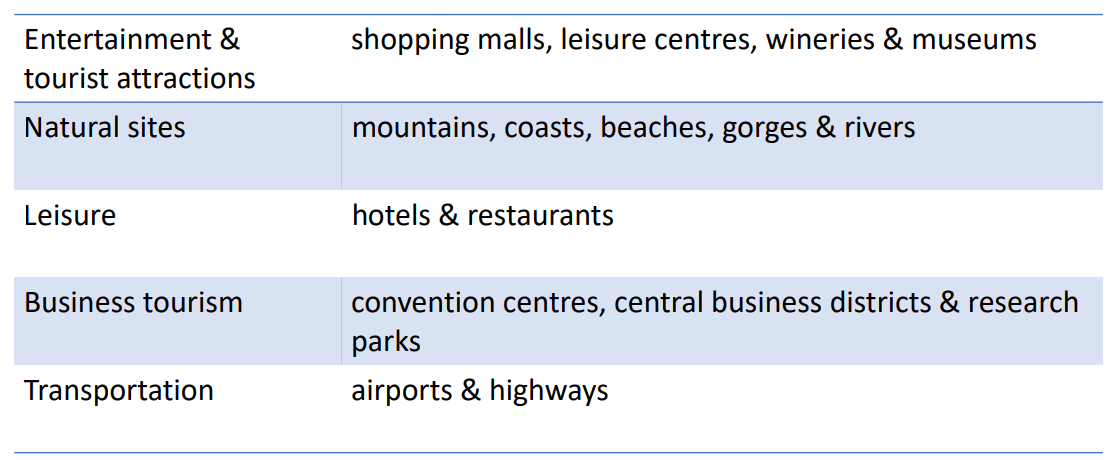
At this link you can download an interesting pdf presentation focused on the Localization of electric car stations.
How electric vehicles benefit on tourism sector?
The main benefits of electric vehicles for tourist sector are:
- Gaining customers
- Increased traffic
- Green image
- Brand awareness
- Competitive advantage of the destination / lodging
- Extra credits (e.g. Ecobnb or the Trip Advisor‘s Green Leaders Programm)
- Reduction of Gasoline use within / on site or attraction
- Improving public image of the destination.

What are the benefits of electric vehicles?
Benefits of EV Tourism are:
- Economic: increased tourism spending due to lower fuel costs
- Social:
• Connecting communities
• Learning about new technology and decreased dependency on fossil fuel - Environmental
• Zero tailpipe emissions
• Opportunity to use renewable energy sources like solar power
• Decreased noise pollution
• Developing electric mobility locally can involve development of innovative mobility concepts (e.g. EV and electric
bicycle sharing systems & intermodal travel schemes) - Generally
• Contribute to overall awareness rising by influencing and educating the citizenry
• Raise awareness of locals and positive image gain for city due to charging infrastructure and large-scale use of EVs
What do you mean by interoperability?
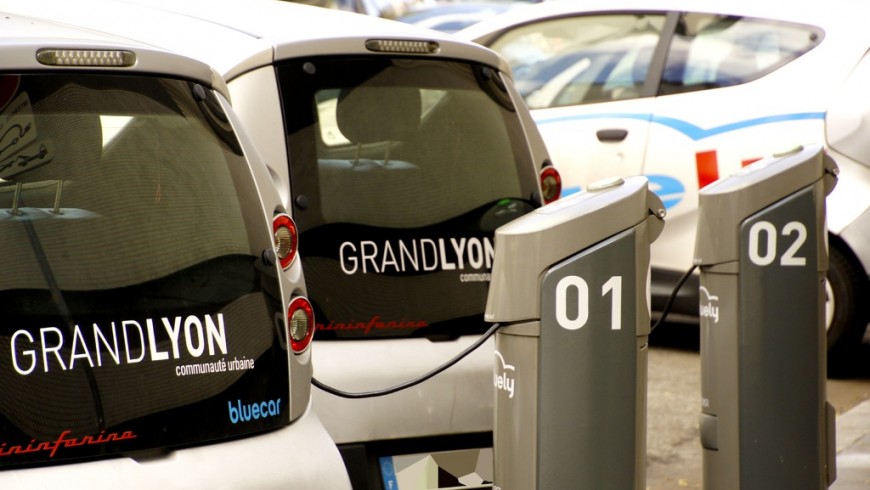
Interoperability can be defined as “the ability to access to all the charging points without restrictions, or discrimination”
In the last years, the choice of the technical mean to access the charging station and of the payment method and related business model was completely in the hands of the charging point operators (or e-mobility service providers). Considering that hundreds of providers exist is easy to understand how variable and multifaceted the situation can be with regards to access and payment systems.
Despite the current effort in “connecting” the different networks, looking for “interoperability” and “roaming”, it is still extremely common to have many networks in the same area, each based on different access methods and on the need to enter into contracts with the providers.
This can create significant hurdles to EV drivers, which would be forced to sign many contracts or, on the other hand, to choose only one provider and to use only a small part of the overall number of charging stations. This situation, already critic in a small area, can become a real barrier when crossing borders and moving to other countries…
Despite the good number of installed e-Charging Stations, EV drivers still have to carefully plan their travels, gathering information both on the localization and the access and payment method of the needed charging station. These difficulties undoubtedly slow down e-mobility diffusion.
The possibility for the customers to access the EV charging infrastructure in a seamless and valuable way and receive transparent information for service payments is often referred to as Interoperability, although the word itself can include different meanings and several aspects…
What are the Interoperability Challenges for electro mobility?

The EV drivers needs 5 functions:
- Finding
- Informing
- Reservation
- Payment
- Roaming
The issue of access, identification and payment is today one of the biggest open points with regards to EV charging infrastructure.
Even if most of the charging processes will probably happen at home through domestic apparel, the possibility to charge on public stations while traveling long distances is indeed a key enabler for e-mobility diffusion. And to perform a charging process, a procedure of access, (identification) and payment needs to be executed.
Due to this, it is still extremely common to have many networks in the same area, each based on different access methods and very often on the need to enter into contracts with the providers.
EV drivers would so need to plan very carefully their trips, actually studying their possibilities to access to one or another part of the infrastructure and considering the time and effort to sign up to different schemes and services. The difficulties increase when crossing borders and moving to other countries.
In this interesting document you can find out possible solutions for the interopeability issue e and 7 tips to better the interoperable e-car stations.
How to involve your community in the implementation of ev charging stations?

There are several good practices to involve citizens in electric car charging stations planning and implementation. E-HUB is a model of help-desk for Public Administrations and stakeholders in the field of e-mobility and charging infrastructure. In this document you cand find the Best practices from seven partners of Italy, Slovenia, Austria and Germany. The document aims to show successful experiences and results about the partcipatory apporach in planning e-mobility infrastructure and services and example of e-mobility help desk in the Alpine Space area.
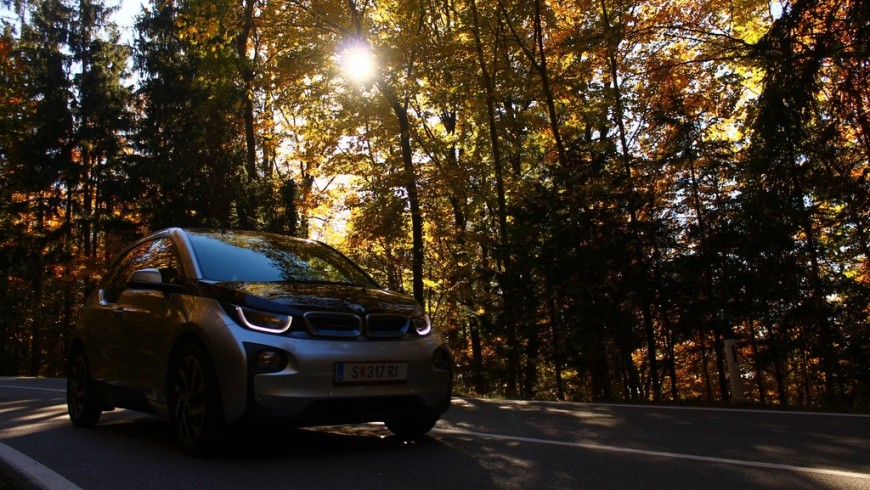
Have you find this manual useful? We hope so! Have you decided to implement a charging infrastructure in your eco-hotel? If you are still not convinced, read this article!
Do you want to implement an electric bicycle charging service in your hotel? At this link you will find the complete guide to propose charging services for e-bikes.
If you want to further investigate the theme of charging stations for electric vehicles, below you will find several useful documents in English and German made available by eMoticon. Enjoy the reading!
Insights and online resources
- Check-list for the implementation of charging infrastructure for electric vehicles at touristic sites within the Alpine region, by im-plan-tat, 2019: you can download the pdf clicking here
- The role of public authorities in charging infrastructure development
- Tips for the Installation of E-Charging Stations, March 2018. Available at: https://www.energieloesung.de/installstipps-e-ladestation
- Hotel Association Germany (IHA) e.V. (ed.), 2018: MERKBLATT Electromobility – Information and Practical Tips, April 2018, available at: https://media.hotellerie.de/media/docs/iha-merkblatt_elektromobilitaet_april_2018.pdf
- For hotels and restaurants, the subject of charging is becoming increasingly interesting: elektromobilitaet.nrw
- Stöckl, Richard (Innovation and Technology Service Chamber of Commerce Tyrol), n.y.: Legal regime for the construction and operation of electric charging station, available at: http://www.ecotirol.at/images/doku/elektrofahrzeuge-betriebe-rechtliches.pdf
- An All-in-One Guide to implement e-bike charging stations in your hotel
- Reis, Martin (Energieinstitut Vorarlberg), n.y.: e-bike charging stations, available at: https://www.energieinstitut.at/gemeinden/mobilitaet/radverkehrsfoerderung/e-bike-ladestationen/
- information for e-bike charging stations: https://www.energieinstitut.at/wp-content/uploads/2016/06/2016-06-07-Infos-E-Bike-Ladestationen.pdf
- Stöckl, Richard (Innovation and Technology Service Chamber of Commerce Tyrol), n.y.: Legal regime for the construction and operation of electric charging station, available at: http://www.ecotirol.at/images/doku/elektrofahrzeuge-betriebe-rechtliches.pdf
- EU Science Hub, Interoperability and e-mobility
This manual has been created in the context of E-MOTICON, a European project that promotes the spread of sustainable mobility and charging systems for electric vehicles in the Alps. The manual has been realized by Ecobnb following the Bolzano and Tolmezzo workshops, with the contribution of:



